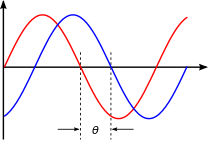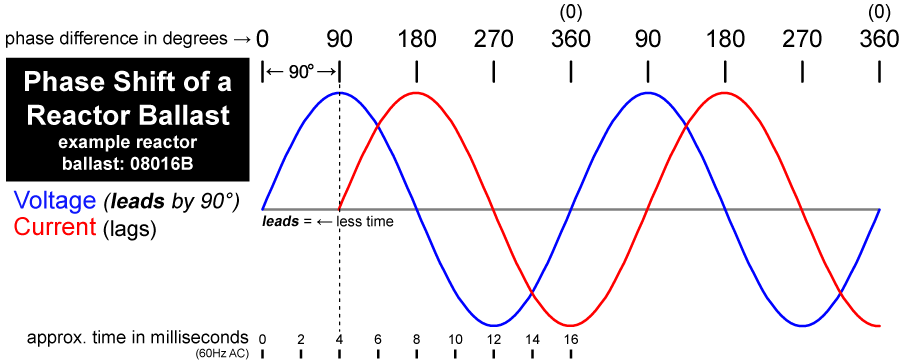PAR
Abbreviation for Parabolic Aluminized Reflector. This is the type of reflector used in sealed beam bulbs and of course PAR bulbs.
Parallel
-
Ballasts
"Refers to ballasts that employ multiple output current paths from a single ballast to allow lamps to operate independent of one another, allowing other lamps operated by the ballast to remain lit should companion lamp(s) fail." - Advance Ballast Glossary
Parking Lot Lighting
PCB
- Abbreviation for "polychlorinated biphenyls". In 1978 the Environmental Protection Agency enacted rules banning the use of PCBs in ballasts. The ballasts rarely if ever turn up in the field. However, if they do they must be recycled in a particular way and may not simply be disposed of.
- Abbreviation for Printed Circuit Board. This is any 'standard' circuit board in use inside an electrical device.
Pendant
See Fixture (Lighting).
Perceived Brightness
How bright a light source appears to be, often in comparison to another light source.
Perceived Color
The color that appears to be coming from a light source.
Phase Difference
The measurement of the difference in phase between two waveforms. An example would be the phase shift that occurs in a ballast wherein the inductive effects of the coils in a ballast cause the circuit's current to lag the voltage. such as in the case of the voltage and current in an AC circuit.


Phase Shift
Reactor ballasts are in essence simple inductors. Inductors cause current to lag. Alternatively, capacitors cause current to lead. Thus power factor correction (correction of phase differential) can be accomplished by adding a capacitor to a reactor ballast.


Phenomenon
- An effect or occurrence seen, smelled, felt, etc whose cause or explanation is either unknown or difficult to understand.
- Plural - Phenomena
Phosphor
A powdered chemical/mineral substance that coats the inside of various bulbs such as fluorescent, metal halide, mercury vapor and some light emitting diodes. The phosphor used in fluorescent and high intensity discharge bulbs is designed to absorb energy in the form of ultraviolet wavelengths and then re-emit that energy as visible light.
Photocontrol
A sensor used to turn the power supplied to other devices on or off based on light levels. These are also referred to as "dusk to dawn" sensors and/or photocells.
Photon
A basic particle of light measured as a single quantum. For simplicity's sake it can just be considered a single basic unit of light.
Photopic Vision
Photopic Vision is responsible for sight under well lit conditions. It accounts for all vision falling within an approximately 2.5 degree center field of view. As such, the photoreceptors responsible for Photopic Vision lie at the retina's center. Photopic Vision permits color perception and delivers the highest visual acuity of the three primary classes of vision. It is able to do so because of the fovea which is the portion of the retina with the highest concentration of photoreceptors. It is most sensitive to light at a wavelength of 555 nm (green).
See also Mesopic Vision and Scotopic Vision.
See also Mesopic Vision and Scotopic Vision.
Photoreceptor Cell
A type of cell in the retina that can absorb photons of light and convert them into signals that the brain can interpret as color. There are two different classic photoreceptor cells called rods and cones. Rods are almost completely responsible for night vision. Cones detect color and light at higher light levels.
Pigment
- "[A] natural substance that gives color to animals and plants; a substance that gives color to something else." - Merriam Webster
- The three pigment primary colors are Red, Yellow and Blue which collectively are commonly referred to as the RYB model.
PL
Philips designation for plugin compact fluorescent bulbs. PL is the abbreviation for "Philips Lichtgevende" or Philips luminescent (fluorescent). The compact fluorescent bulb in its widely available and commercialized form was invented by Philips and thus was an exclusive product for a time.
Pool Lighting
See Fixture (Lighting).
Position Oriented
Refers to a bulb that is designed to operate in a particular orientation.
See also Operating Position.
See also Operating Position.
Potting
- The filling of a ballast casing with a solid or semi-solid material designed to decrease noise, protect from moisture, increase heat dissipation which in turn increases performance and longevity.
- Potting Material:
- "A mixture of asphalt with 50 - 60 percent silica sand used to fill the metal cases of electromagnetic and electronic ballasts." - Advance Ballast Glossary
- "Class A" silica sand mixture - A plastic compound used to "pot" (fill) cases of electromagnetic ballasts, protecting the Core & Coil and other components from moisture, as well as to dampen sound and to remove heat.
Power Factor
- Abbreviated as "PF". The ratio of (power consumed (watts) divided by the voltage supplied) to the actual measured current load (amps). The maximum power factor of any circuit is 1.0.
- As stated by Ohm's law the basic calculation of the current load of a system is calculated as Amps = Watts over Volts. Note that this is only applicable when the power factor of the circuit being measured is 1.0. Basic resistors such as a heating element or an incandescent bulb have power factors of 1.0 because the power they consume (watts) is exactly their current load (amps) times the voltage supplied.
- Some circuits have a higher current load (amps) than (watts consumed divided by voltage supplied). In lighting the most common example of power factors that are less that 1.0 is that of ballasts.
- Low Power Factor - Commonly this refers to a ballast with a power factor of 0.50. This power factor causes the ballast to create current load that is approximately twice that of a high power factor ballast. This results in less fixtures being able to be installed on a circuit and thus raises the costs of installation.
- Normal Power Factor - "Ballasts with a power factor of less than .90 and that do not incorporate any means of Power Factor Correction." - Advance Ballast Glossary
- High Power Factor - "[A] ballast that requires less line current than low power factor ballast. A ballast in which the power factor is greater than 0.9." - Advance Ballast Glossary
Power Factor Correction(ed)
"Ballasts that incorporate a means of Power Factor Correction but whose power factor is less than 90% and greater than 50%." - Advance Ballast Glossary
Power Supply
A source of electricity for use in powering electronic devices.
Preconditioner
"Grouping of electronic components in electronic IC ballasts that provides power factor correction, low line current harmonics, programmed start and regulation for input voltage variation." - Advance Ballast Glossary
Preheat Bulb
A fluorescent bulb that requires its electrodes to be heated before the electric arc can be formed.
Preheat Circuit
Probe Start
Programmed Start
Pulse Rated
A socket designed specifically to accept a high voltage pulse from an ignitor without arcing.
Pulse Start Metal Halide requires 4kV (4,000 volts) and High Pressure Sodium requires 5kV up to 600 watt and then 6kV for 1000 watt.
Pulse Start Metal Halide requires 4kV (4,000 volts) and High Pressure Sodium requires 5kV up to 600 watt and then 6kV for 1000 watt.
Pulse Start
Pulse Starter
See Ballast.
